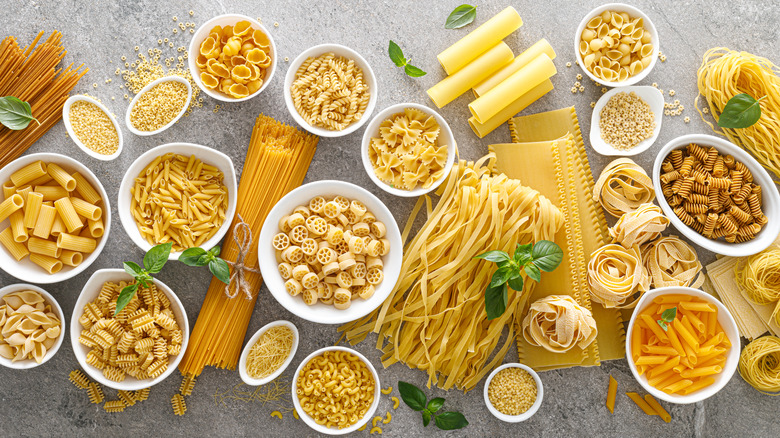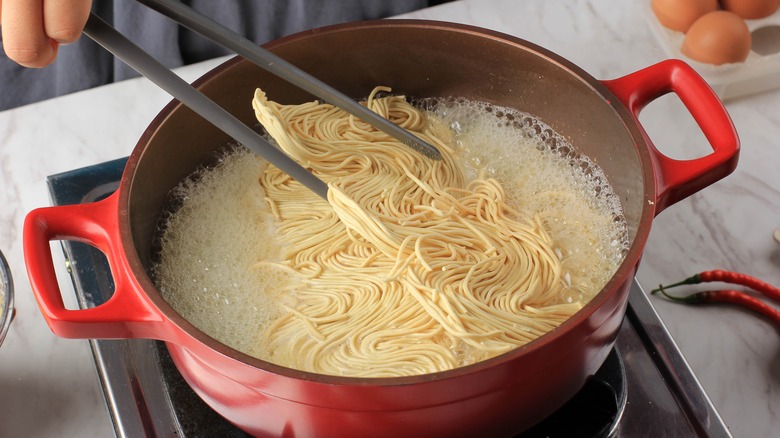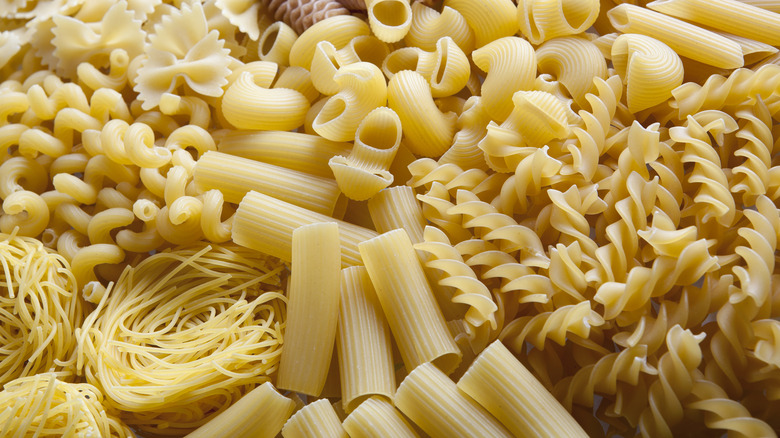Not All Noodles Are Pasta
It is very common for people in the United States of America to use the terms "noodles" and "pasta" interchangeably even though it is not entirely accurate to do so. People eat noodles all around the world and the Japanese chef who has spent a lifetime perfecting the art of ramen will surely bristle at the thought of his work being referred to as "pasta". Context is key, but unfortunately, establishing a clear definition of pasta versus noodles can be challenging.
As with all facets of language, the terminology of food varies wildly from region to region. Considering how loyal people are to their local cuisine, the prospect of establishing a universal, global dictionary of food is more likely to start an argument than resolve anything. However, certain characteristics help establish pasta as a distinct category.
"Pasta" specifically refers to noodles used in Italian cuisine, which generally consist of durum wheat flour. "Noodles" refers to the much broader category that pasta is widely considered a part of although the word is often used specifically to refer to various types of noodles used in East Asian cuisines. It's not the clearest definition but when you look at the origins of these words, it's clear how things became so mixed up.
Where the words noodles and pasta come from
Today, the word "noodles" is generally used to refer to East Asian noodle dishes such as ramen and pho. The etymology of this term takes us to a much different part of the world, one you probably don't associate with noodles at all. It came to the English language from the German word "nudel," which began appearing in cookbooks around the 15th century. It is widely believed that "nudel" began with an even older German word, "knodel" or "nutel," meaning "dumpling," or, in a less-than-savory slang way, "turd". The latter may have something to do with the way spaetzle, a German dish that has commonalities with both pasta and dumplings is made.
Pasta is a subset of the noodle world and one with much clearer defining features than the broad family it belongs to. Pasta is an Italian word, which is the first key in distinguishing it from other noodles; pasta is distinctly Italian. Its etymology lies in the Latin "pasta," meaning "paste," which in turn derives from an older Greek word of the same spelling, which referred to porridge. One thing that may contribute to Americans' use of pasta and noodles as interchangeable terms may be the fact that "pasta" didn't become part of the English language until after WWII.
The ingredient that distinguishes pasta from other noodles
Generally speaking, if the noodle dish you're eating is Italian in origin, it should be referred to as pasta. Another detail can help distinguish pasta from other types of noodles and that's the kind of flour that composes the noodles. Pasta is typically made from a particular species of wheat called durum. Durum wheat's defining feature is the texture of its berries, which are hard as rocks, and take immense force to grind ("durum" is a Latin word meaning "hard"). Durum wheat is especially high in protein, creating more gluten when mixed with water. That helps pasta hold its shape and achieve the al dente quality chefs strive for.
Dried pasta is typically made using semolina flour, which is milled from durum wheat, and is very coarse. Fresh pasta, including stuffed types like tortellini and ravioli, is often made with double zero flour, which is also commonly milled from durum wheat but is extremely fine in texture whereas semolina is coarse. Another difference is that fresh pasta often contains eggs.
Other types of noodles besides pasta aren't subject to such strict rules regarding ingredients and can be made from any type of flour. For instance, Japanese soba noodles are made from buckwheat while pho uses rice noodles. However, growing awareness of alternative diets and food intolerances has made whole wheat, rice, and even chickpea flour pasta into common offerings. Those variations mean the line between pasta and noodles is growing even fuzzier.


